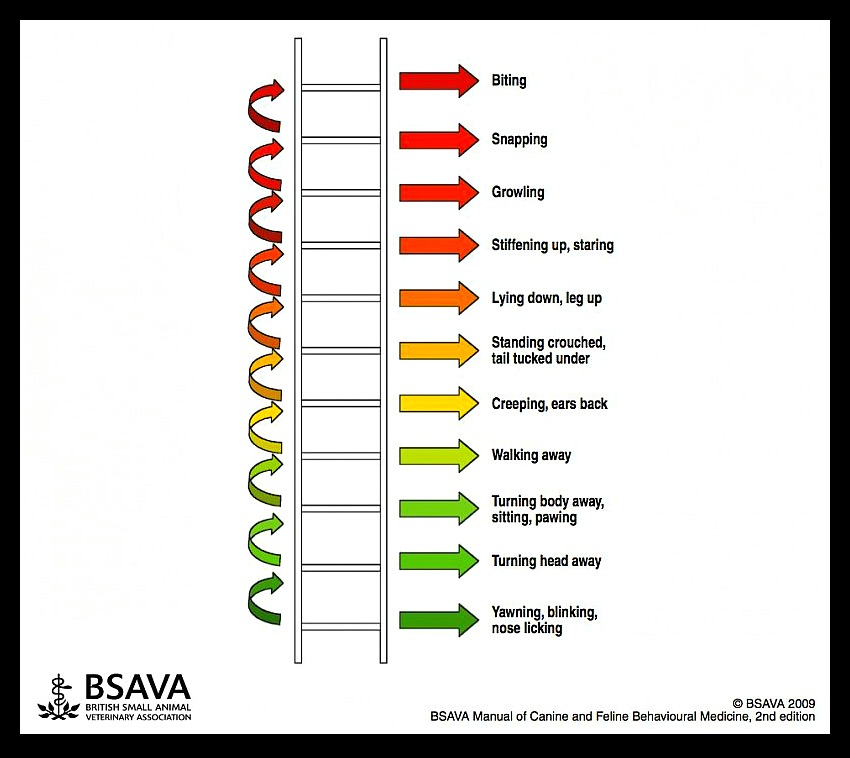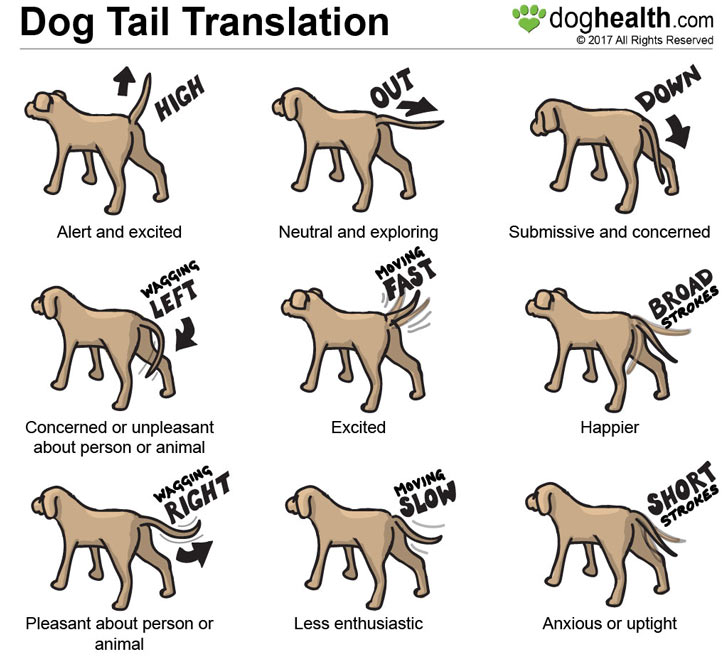In this post:
- Growling
- Barking
- Wagging Tails
Humans and dogs both use verbal communication to translate thoughts and ideas to one another. The major difference between the two species is that humans primarily communicate verbally whereas dogs communicate through body language first and vocalizations second.
Humans can easily communicate ideas and thoughts to other humans using speech. When uncomfortable, humans can tell the other person to stop. They can voice concerns. Words that might suggest discomfort can be further superseded by the intonation that suggests alternative meanings to phrases.

Dogs on the other hand lack the ability to combine sounds and syllables to verbalize words. They can bark, growl, and yelp, but other than that dogs must rely on their body language to translate ideas. Although dogs can make only a few verbalizations, receptive dogs understand those sounds as a general idea or communication.
Humans, unfamiliar with these sounds and how they should be understood, often misunderstand a dog’s intentions with their sounds and body language.
Growling During Play
When dogs play, they may bark, growl, paw, and scratch. Although these high-energy activities may look aggressive to humans, they are often completely innocent in the eyes of the dogs.
Additionally, dogs resolve conflict through barking and growling. When humans intervene too quickly, we stifle the dog’s ability to solve problems. Imagine if your parents got into the middle of every fight you have with your friends – you would have no conflict resolution skills!
On a similar note, dogs do not have access to professional mediators, so they depend on barking and growling to work out their differences.
Growling as a Warning
A dog growls to communicate that they are uncomfortable. Humans can tell another person to “stop”, “back off”, or “go away” and even communicate why (“you are in my personal space.”) But dogs, unable to verbalize their discomfort, use their growl to send similar messages.
Admittedly, growls sound scary to humans. Since dogs cannot express why they are growling, unfamiliar owners can misunderstand growls to be signs of aggression or intimidation. As a result, owners may reprimand their dog for growling.

When owners yell at their dog for growling, they take away their dog’s ability to express their discomfort. The dog, as a result, needs to escalate their actions to send the same message which may include snapping or biting. When you remove the dog’s ability to tell someone when they have had enough, you can create a dog that “bites out of nowhere”.
Ladder of aggression: A dog bite never happens out of the blue! They provide many warning signals along the way to try to get you to stop the uncomfortable situation. If you keep punishing your dog or ignoring the warning signs in the beginning, your dog has no choice but to escalate!
If owners want to reduce their dog’s growl, they need to replace it with an appropriate substitute. Try to figure out the underlying cause of the social discomfort that needs to be addressed rather than the growl. The situation needs to be stopped. These are areas where a dog trainer or behavioralist can be of assistance.
Barking
A dog’s bark is the cornerstone of their vocalizations. Dogs bark for a variety of reasons including:
Territorial or Protective Instincts: A dog wants to ward off threats to their property or family
Alarm: A dog wants to warn the people nearby of potential threats
Boredom: A dog vocalizes their unhappiness because they are bored, lonely, or want more socialization
Play: A dog vocalizes their happiness when playing, like how a child yells when being chased by a friend
Attention: A dog wants something from someone (i.e. attention, a treat, a toy)
Simply put, a bark is not just a bark. As responsible owners, it is up to us to understand what your dog is trying to say when they bark.
Wagging Tails
A wagging tail does not always mean that your dog is happy!
When scared or nervous, your dog’s tail may be tucked under their body or stiff and unmoving.
When your dog is happy, their tail will be relaxed and moving quickly, accompanying a wiggling rear end.
And when your dog is feeling poorly, look for their tail to hang a little lower than usual.
Here is an amazing chart from DogHealth.
Although no two dogs are the same, take the time to understand your dog’s body language. Specifically, learn how your dog expresses their emotions, namely when they are nervous, excited, scared, and happy. Of course, the best way to learn about your dog is to spend time with them! Observe them in a variety of settings: at home, in a neutral area, alone, in a group, etc. The doctors from the show HOUSE say it best:
- Dr. Wilson: What exactly did Cuddy tell you?
- Dr. House: Nothing that your body language isn’t telling me right now.

Special thanks to:

Deirdre ‘Little Darling’ Franklin, MSPP
Deirdre “Little Darling” Franklin is the founder, president, and soul behind Pinups for Pitbulls. She holds a master’s degree in public policy from Drexel University, where she specialized in breed-specific legislation. She is also the Volunteer & Foster Manager for the ASPCA Behavioral Rehabilitation Center in Weaverville, NC.

Jeff Tinsley
Jeff Tinsley is the owner of Sound Animals and Seattle’s most trusted dog behavior expert. He has been helping Seattle dog owners to solve their dog training and dog behavior problems for over 15 years. Recommended by veterinarians, rescue organizations, breeders, and other pet professionals, Sound Animals has all the dog classes and dog behavior training that you need.





